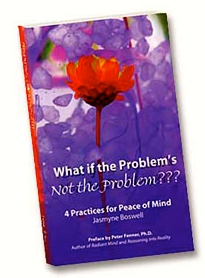Memoirs are the backstairs of history – George Meredith
The surge of memoir writing and reading could be linked to the sudden popularity of reality shows and the reason more and more movies are touting “Based on a True Story.” We humans are curious and even fascinated by the way “others” live. Watching reality shows, seeing movies that give us a glimpse into the life of someone famous, and reading the private details of total strangers, allows us to legally indulge in our “Peeping Tom” nature.
If you Google “memoir,” you get a choice of 11,000,000 links. Everyone has a story to tell, and based on the numbers, many of us want to preserve our story in one way or another. Photos tell part of that tale. But even though a picture says 1,000 words, if you want control over the interpretation of those photos, writing your memoir is one way to do it.
Some write so their children won’t have unanswered questions, because they didn’t ask more questions of their own parents. Others write to impart their wisdom to the world. Still, others write so they can make sense of the life they have lived. Some people write to publish and others are satisfied with just getting it all down.
Unlike writing an autobiography, one is not limited to writing one memoir in a lifetime. Since a memoir is usually an account of a time that has great personal meaning, a life writer will probably have more than one written before they say goodbye to this world.
A memoir consists of a story (your journey from the beginning to the end of an event or time period), reflection (your thoughts and feelings along the way) and dialogue (conversations between you and the characters that accompany you along the way).
We all have the material in our minds. If you want to write it, the question I usually hear is, “How do I organize it and give it life?”
To get started:
1. First, decide what time period you are interested in recording. You can do this by making a list of the crucial events in your life. If you’ve kept a photo album, taking a visual journey down memory lane can help. Once you have your list, see which one(s) you are most drawn to. You’re going to be intimately involved with your choice for a while, so you want to choose one that will hold your interest.
Maybe there was an event that turned your life in a completely different direction. I can remember a time in my mid-30s when everything in my external life seemed right on track. Inwardly, however, I felt empty. I took a walk through the gardens of a Hindu center near where I lived and stopped at a little sign that read, “Everything else can wait. God cannot.” That sign took me to my knees and on that very spot, my hedonistic lifestyle melted into the Earth I knelt on. Your crucial event may have been more or less dramatic. It doesn’t matter. What matters is that you are called to write about it.
2. Next, decide for whom you are writing it.
This is important. If you’re writing it for you children, there are probably certain details you might choose to leave to the imagination (or out completely) and others you would research to accurately record the facts.
3. Then choose a theme.
This is crucial. Themes are the spine of a story. Without a theme, a memoir is just a recounting of events. For the same reason explorers make detailed plans before leaving on a trek—choosing a theme will make the writing far easier, and your reader also has an easier time following your story.
4. It also helps to know why you are writing your memoir.
It might be one of the reasons I mentioned above, or as simple as the fact that you now have the time. One of the reasons it helps to know “the why” is so when you’re a quarter of the way through your story when you begin to wonder whatever possessed you to start writing in the first place, you’ll have an answer.
5. Once you’ve answered 1–4, you’re ready to write an outline of chapters or vignettes, depending on your preference, and then begin.
If you get to this stage and you’re still having trouble getting started, you might try writing an introduction and an epilogue to your memoir. An introduction should tell the reader what they can expect to find, story-wise, in the coming chapters. It should be intriguing enough to make them want to dive in. The epilogue is usually a wrap up and suggests the reason you chose to write—in essence, the message the book imparts. Writing the introduction and the epilogue also gives you the bookends to your journey, and can help you stay on track.
Just like a good novel, a good memoir develops characters, has a plot, and as Kurt Vonnegut said, “Should use the time of your reader in such a way that he or she will not feel their time reading was wasted.” He also said, “Give your readers as much information as possible as soon as possible. To heck with suspense. Readers should have such complete understanding of what is going on, where and why, that they could finish the story themselves should cockroaches eat the last few pages.”
The latter quote may be especially pertinent for writers on Maui.
Just remember, no one is more qualified to recount your life story than you!

